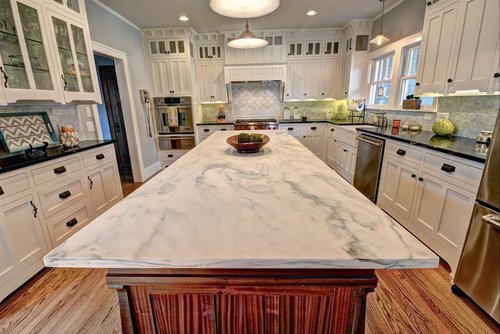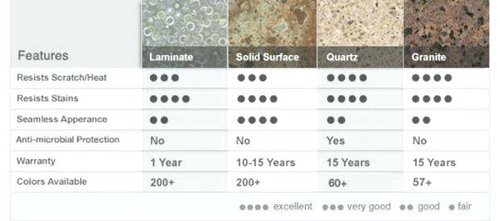
If you have watched even 5 minutes of the DIY channel or HGTV you are familiar with the American obsession with granite countertops. Their stone grandeur speaks of luxury and class. In fact, it seems as if most homeowners would rather have granite countertops than a roof! It hasn’t always been that way though. In fact, in 1987 the Los Angeles Times referred to it as a cutting-edge material but too expensive for the average homeowner. Through the remainder of the ’80s it rivaled marble for the material of choice with young professionals.
So just how did granite go from countertops reserved for the well-to-do to a standard in the home construction world? A quick review of a commodities annual will show that the import of granite has increased 10x since the millennia alone. But it isn’t just because consumer tastes have changed. In fact, it is due in large part to global market forces.
For the most part, American imports of finished granite originate in Brazil, China, and India, with Brazil providing about half of the total supply. In short, your current granite countertop probably came from either Brazil or China or somewhere in between. Another factor in the rise of granite is that the 90s brought about computerized controlled saws. These saws make the major cuts (like the hole for your sink) and allow the granite slab to be shipped and ultimately installed a lot easier.
Most importantly though, the rise of granite most likely came about during the housing bubble of the early 2000s. Trends in home construction helped alter public opinion on what quality is and is not. Builders began putting granite into their homes and it quickly became an industry standard. Older houses in need of renovation took their cue from new construction and replaced older countertops (Formica, to be specific) with the new, “good” stuff. Granite became the prime material of a quality home. This is quickly changing though.
According to a recent study by Houzz, granite has been on a three-year decline among homeowners. Granite is beginning to give way to quartz and even marble.

Jim Wilkins of Wilkins & Wilkins General Contracting, Inc. has noticed the shift of material preference in his decades of custom home building. “Quartz is a beautiful surface and in small sizes, it can be perfect. But quartz isn’t available in the sheet size that granite is. The homeowner is left with a countertop that shows more seams than granite or marble would have.” And it’s true. Quartz is more durable than granite and lends itself to everyday wear and tear better than other materials. But as with most trend changes, this isn’t really the determining factor for the staying power of granite. “Granite prices came down. They were top of the pile for a long time, but similar to brands like Mercedes and BMW, manufacturers noted an interest in other target markets and so adjusted their price scale. Granite became more affordable and easier to include in a home build budget,” notes Wilkins.
For the discerning homeowner marble, with its gray veining and high-end reputation, is the preferred material. Granite is a more affordable yet equally impressive option. It is also easier to come by and more affordable than ever. Consider it more bang for the buck. Then there is quartz. Though a bit more unsightly with its smaller sizing, it has that classy look of marble with a price point even less than granite and a durability that will rival Formica or even solid surfaces.
In short, granite isn’t gone. But with options like quartz, soapstone, laminate, butcher block, marble, and solid surface, it doesn’t have to be the only choice for your custom home.
